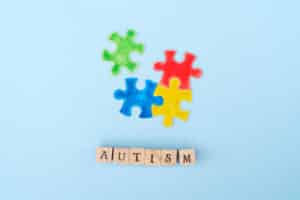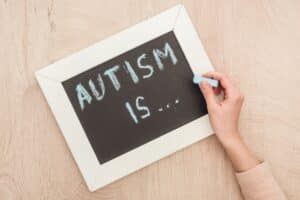Connection Between ARFID and Autism
- Updated:

At Acera Health, we emphasize the importance of understanding the intricate connections between various mental health conditions, especially the relationship between Avoidant/Restrictive Food Intake Disorder (ARFID) and Autism Spectrum Disorder (ASD). ARFID is an eating disorder characterized by significant eating restrictions that lead to issues such as nutritional deficiencies and weight loss without the body image concerns seen in other eating disorders. It often stems from a lack of interest in food, aversions to food textures, or fear of adverse effects from eating. On the other hand, Autism Spectrum Disorder involves challenges with social interactions, repetitive behaviors, and communication, coupled with unique strengths and sensitivities, including reactions to food textures and flavors.
The connection between ARFID and ASD is particularly evident in areas like sensory sensitivities and a preference for routine. For instance, it’s estimated that up to 70% of individuals with ASD have atypical eating behaviors, including limited food preferences and sensitivity to food textures, which mirror the restrictive eating patterns seen in ARFID. This sensory sensitivity can drastically limit the variety of foods consumed, risking nutritional deficiency. Moreover, both conditions often involve a strong inclination towards routines and familiarity, extending to dietary habits. This can result in a reluctance to try new foods, further narrowing dietary diversity and complicating nutritional intake. Anxiety, particularly prevalent in individuals with ASD, can also play a significant role in the development of ARFID-like behaviors. The fear of new foods, or food neophobia, can lead to avoidance behaviors limiting dietary variety.
At Acera Health, our approach to treating the overlap between ARFID and ASD includes a comprehensive, multidisciplinary strategy that acknowledges each condition’s unique challenges. By understanding the shared difficulties in sensory processing, dietary routines, and anxiety, our interventions aim to expand dietary variety, alleviate anxiety around eating, and support overall well-being. Incorporating this nuanced understanding of the relationship between ARFID and ASD not only enhances our care delivery but also empowers individuals and their families to navigate these complex conditions with greater insight and resilience. Understanding the nuances between social anxiety and autism can provide valuable insights into the social and communication challenges faced by individuals with ASD, a key aspect of the connection between ARFID and autism. Take our Autism Self-Test for adults today to begin the journey toward understanding and support.
Understanding ARFID
Understanding ARFID is crucial, as it reveals the disorder’s profound impact beyond mere picky eating. Avoidant/Restrictive Food Intake Disorder (ARFID), previously known as Selective Eating Disorder, significantly affects individuals through a restrictive eating pattern. This disorder leads to avoiding certain foods or types of food due to their texture, smell, taste, or a past negative eating experience, resulting in substantial nutritional deficiencies, weight loss, and sometimes a reliance on nutritional supplements for basic dietary needs. Importantly, ARFID is distinct from other eating disorders as it doesn’t involve concerns about body image or weight; instead, it’s driven by anxieties or sensitivities related to eating or the effects of food on the body. Highlighting the prevalence and severity of ARFID, recent studies estimate that approximately 0.5-5% of children and adults are affected by this disorder, underscoring the importance of recognizing its symptoms and impacts. This data emphasizes the need for tailored approaches to treatment that focus on the unique challenges faced by those with ARFID, including addressing specific anxieties or sensory issues that contribute to restrictive eating patterns.
Autism Spectrum Disorder Explained
Autism Spectrum Disorder (ASD) represents a complex developmental condition that significantly influences communication abilities and behavioral patterns. Characterized by a wide spectrum of symptoms and abilities, ASD primarily manifests through difficulties in social interactions, repetitive actions, and both speech and nonverbal communication. However, it’s crucial to recognize the diversity within the autism spectrum, as individuals can exhibit a range of unique strengths and differences. For instance, some may have exceptional memory, excel in math, art, and music, or have acute attention to detail. Understanding ASD is not just about acknowledging the challenges but also appreciating the distinct capabilities and perspectives individuals with autism bring. This holistic view is essential for fostering supportive environments that nurture their growth and development.
The Link Between ARFID and Autism
The intricate relationship between Avoidant/Restrictive Food Intake Disorder (ARFID) and Autism Spectrum Disorder (ASD) is illuminated through several intersecting factors, notably sensory sensitivities, the need for routine, social and communication challenges, and anxiety-related food avoidance.
Sensory Sensitivities
At the core of the link between ARFID and ASD are the pronounced sensory sensitivities often experienced by individuals with autism. These sensitivities can profoundly affect their interaction with food, making textures, tastes, smells, and even the visual presentation of food overwhelming. The concept of autism fixations sheds light on why individuals with ASD might exhibit extremely selective eating patterns, similar to those observed in ARFID, focusing intensely on specific foods or textures.
For example, an individual on the autism spectrum might find the texture of certain foods intolerable, such as the crunchiness of vegetables or the sliminess of certain fruits, leading them to avoid these foods altogether. This heightened sensory awareness can restrict dietary variety to a few tolerable items, mirroring the restrictive eating patterns characteristic of ARFID. A deeper understanding of how autism affects the brain can illuminate the root causes of these sensory sensitivities and dietary preferences, offering a scientific basis for the overlapping symptoms with ARFID.
Need for Routine and Familiarity
A strong preference marks both ARFID and ASD for routine and familiarity, traits that significantly influence eating habits. Individuals with either condition may show reluctance or outright refusal to try new foods, sticking instead to a limited set of familiar foods. This resistance to dietary change can exacerbate nutritional deficiencies and limit social eating opportunities, further entrenching the restrictive eating patterns seen in ARFID. Exploring the differences between BPD and autism helps in understanding the complexity of routine and familiarity needs, highlighting why certain behavioral interventions may work differently for individuals with ARFID and ASD.
Social and Communication Challenges
Eating is a nutritional necessity and a social activity embedded with various cues and expectations. For individuals with autism, navigating the social nuances of eating, such as communal meals or public dining, can be challenging. Misunderstandings or discomfort in these settings may lead to avoidance behaviors, restricting eating patterns in ways that echo those observed in ARFID. The overlap in social and communication challenges can complicate participation in shared meals, further isolating individuals from social dining experiences.
Anxiety and Food Neophobia
Anxiety, a prevalent comorbidity among individuals with autism, plays a crucial role in the development and perpetuation of ARFID. A specific manifestation of this anxiety is food neophobia, or the fear of trying new foods, which is particularly common among those on the autism spectrum. This intense fear can lead to avoiding a wide range of foods, a defining feature of ARFID. The cycle of anxiety and avoidance not only limits dietary variety but can also reinforce the restrictive eating behaviors characteristic of both ARFID and ASD.
Understanding these complex interactions between ARFID and ASD requires a nuanced approach to treatment and support, recognizing the unique challenges and needs of individuals navigating these intertwined conditions.
Management Strategies
Understanding the connection between ARFID and autism is the first step toward effective management. At Acera Health, we emphasize a multidisciplinary approach tailored to each individual’s unique needs, including:
- Nutritional Counseling: Working with a dietitian to meet nutritional needs despite food restrictions.
- Occupational Therapy: Gradually address sensory sensitivities and develop strategies to introduce new foods in a non-threatening way.
- Behavioral Interventions: Utilizing techniques such as Cognitive Behavioral Therapy (CBT) to address anxiety and other emotional barriers to eating.
- Family Support and Education: Engaging and educating families about ARFID and autism, empowering them to support their loved ones effectively.
- Speech and Language Therapy: For those with autism, improving communication skills can also improve social aspects of eating.
Autism Interventions and Treatment at Acera Health
The connection between ARFID and autism is complex and multifaceted, rooted in sensory sensitivities, a need for routine, social and communication challenges, and anxiety. At Acera Health, we are committed to understanding these intricacies and providing compassionate, personalized care to help individuals navigate these challenges. By fostering a deeper understanding of the link between ARFID and autism, we aim to improve the quality of life for those affected and support them in achieving a balanced, healthy relationship with food.
Clinically Reviewed by:

Melody Stone, LMFT
Melody Stone is a Licensed Marriage and Family Therapist who has over 17 years of experience in the field of behavioral health. She works as the Chief Clincal Officer (CCO) to Acera Health, where she is a strong leader focused on sustainable success.
Related Resources

Autism Fixations: What Are They?
Autism Fixations: What Are They? Reviewed by: Melody Stone Understanding the nuances of mental health conditions is essential, especially for those working in healthcare and

Social Anxiety vs. Autism
Social Anxiety vs. Autism Reviewed by: Melody Stone In the nuanced world of mental health care, differentiating between social anxiety and autism is not just

The Connection Between Depression & Autism
The Connection Between Depression & Autism Reviewed by: Melody Stone Acera Health, a leading residential treatment center, delves into the critical relationship between depression and

How Does Autism Affect the Brain? An In-Depth Exploration
How Does Autism Affect the Brain? – An In-Depth Exploration Reviewed by: Melody Stone Autism Spectrum Disorder (ASD) is a complex neurodevelopmental condition that affects




